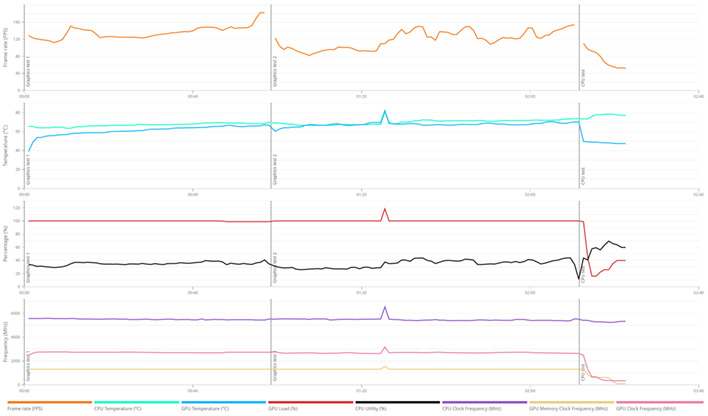AMD Ryzen 9 9950X3D CPU Review: Dominant, No Compromise Performance
For the 3DMark Physics test, we simply created a custom 3DMark run consisting solely of the physics test, which is multi-threaded and CPU dependent, and report the results...
UL 3DMark CPU Physics Benchmark
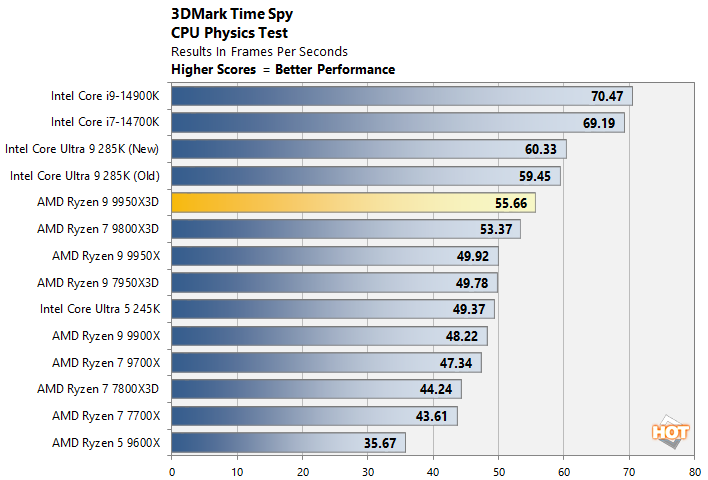
3DMark's Physics test runs particularly well on Intel architectures, with the 14th Gen Core processors clearly on top. The Ryzen 9 9950X3D is the fastest AMD processor yet again, though.
High And Low Resolution Gaming & Graphics Benchmarks
We also ran some mid and high-resolution game and graphics benchmarks on our test rigs with 3DMark, F1 2024, Final Fantasy XIV: Dawntrail and The Talos Principle 2. We used 3DMark's default Time Spy preset, and the games were run in two different configurations — either 1080p with Medium/High details, or 4K with High/Extreme details. The lower resolution tests are designed to be more CPU bound to better isolate processor performance, while the higher resolution tests are more GPU bound, where the CPU should have less of an impact.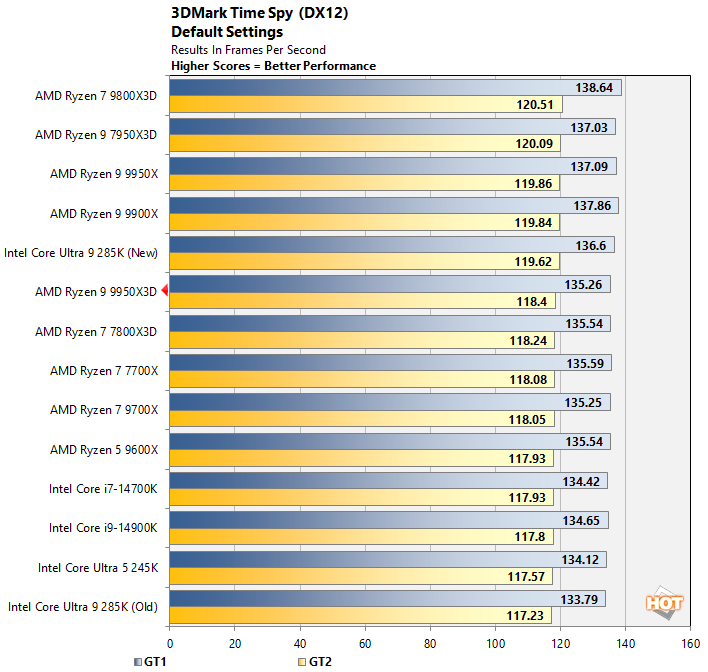
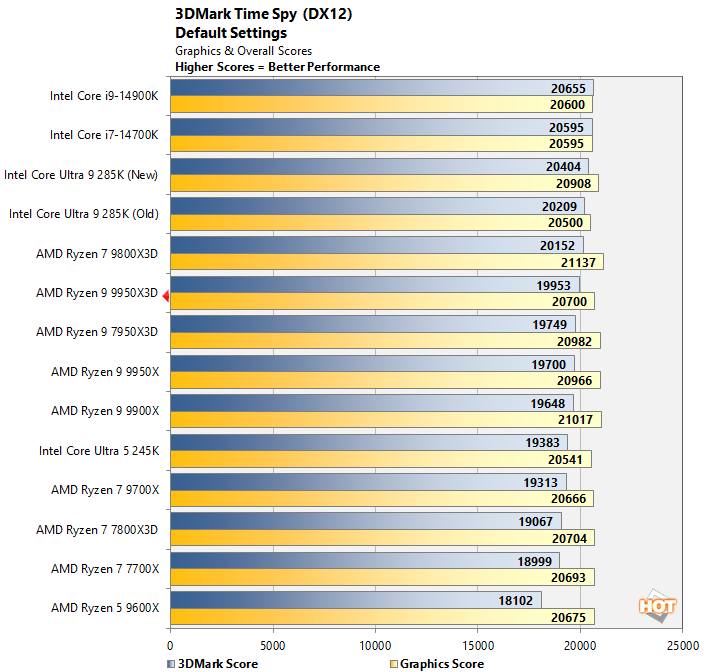
You'll notice these 3DMark-related charts have different rankings. That's because the actual Game Test framerates are not the only things factored into the overall score -- the physics results are also thrown into the mix. As such, the Ryzen 7 9800X3D lands in fourth place here, behind Intel's fastest processors and the current gaming king, the Ryzen 7 9800X3D. The deltas separating the fastest processors here are quite small, though.
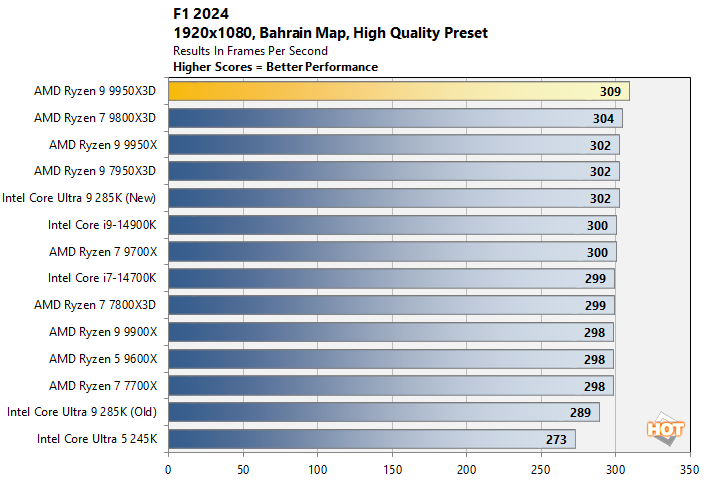
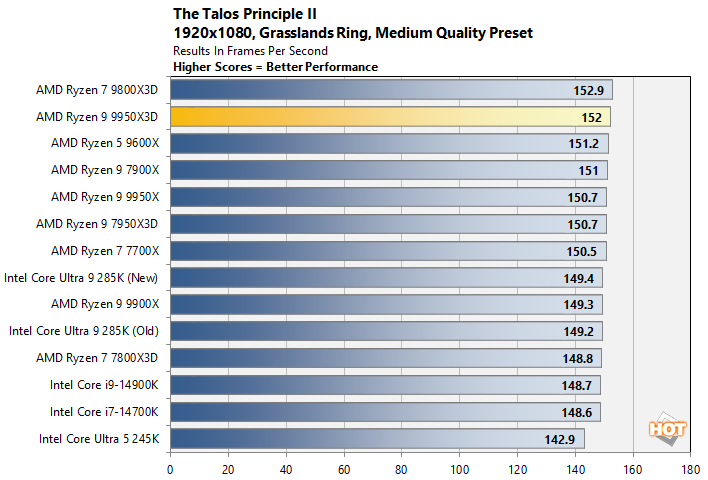
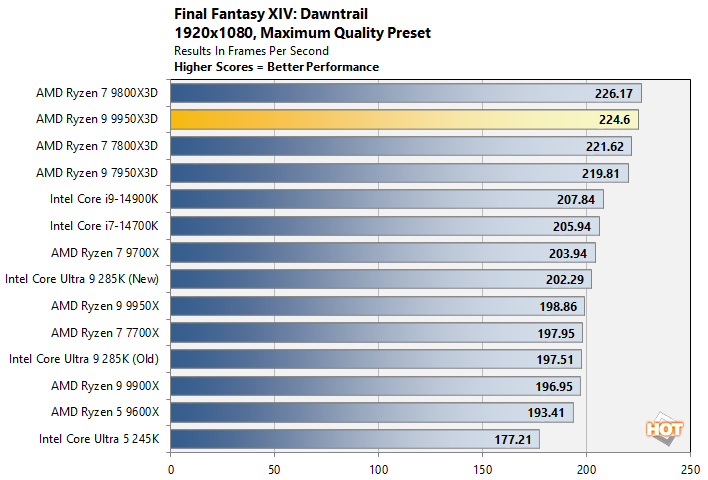
In our actual game tests, the Ryzen 9 9950X3D performs very well. It takes the top spot in F1 2024, and trails only the single-CCD Ryzen 7 9800X3D in FF Dawntrail and the Talos Principle II. Also note the significant uptick for Intel's Core Ultra 9 285K, post updates.
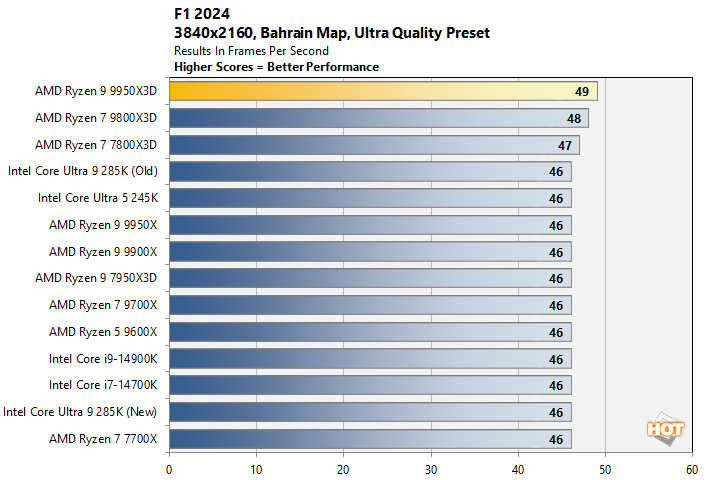
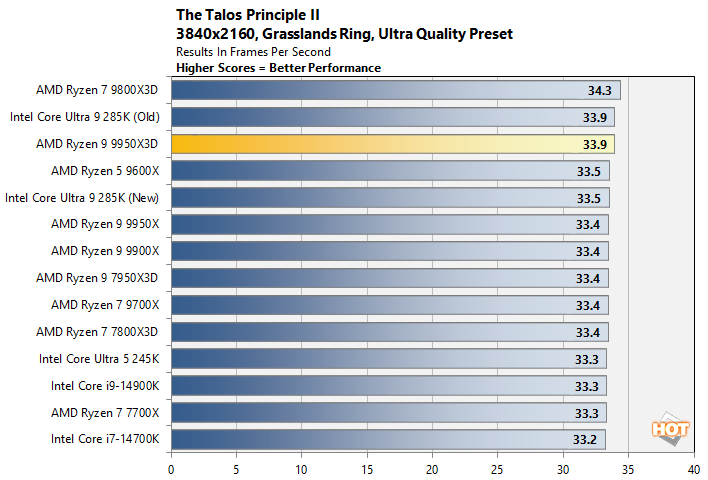
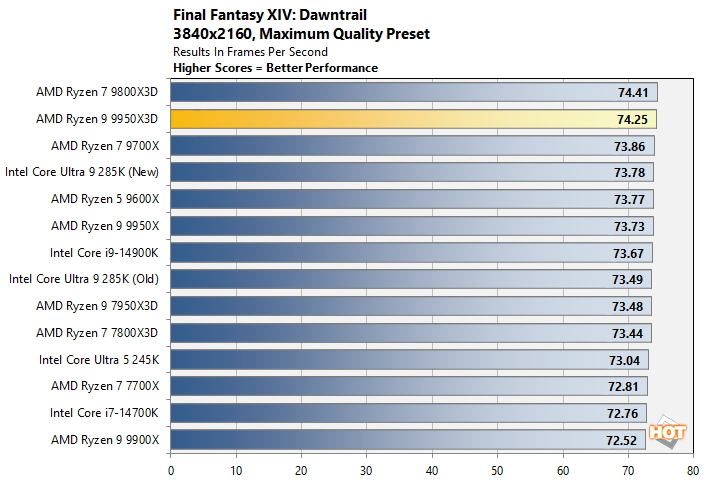
AMD Ryzen 9 9950X3D Total System Power Consumption
Throughout all of our benchmarking and testing, we also monitored how much power our test rigs were consuming with a power meter. Our goal here is to give you an idea as to how much power each configuration used while idling at the Windows desktop and while under taxing CPU workloads across one or all cores. Keep in mind, this is total system power consumption being measured at the outlet and not the the individual power being drawn by the CPUs alone.
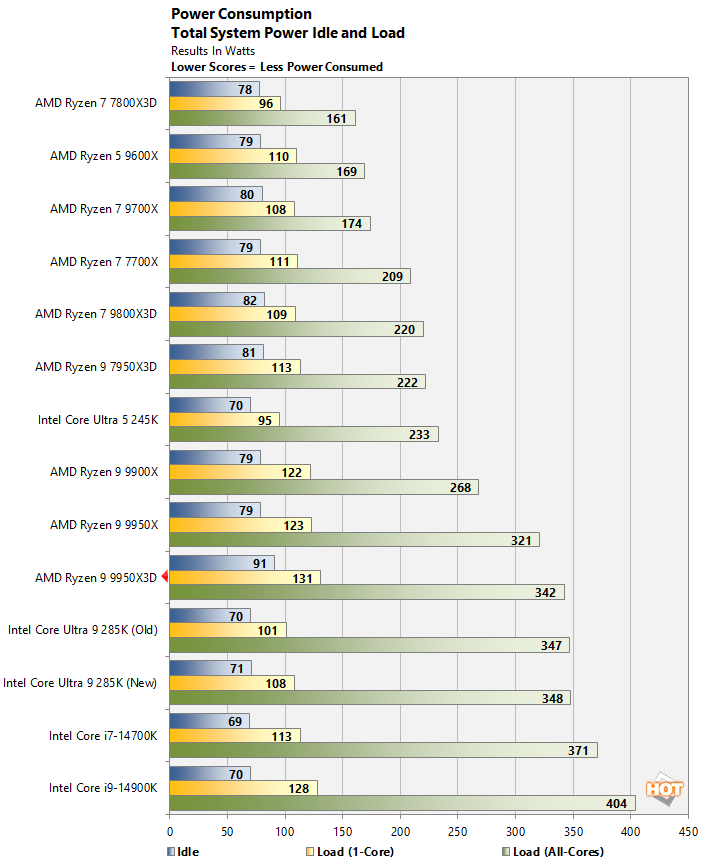
There's nothing extraordinary to report regarding the Ryzen 9 9950X3D's power consumption, other than to say it is a relatively power-friendly processor considering its excellent performance across a wide array of workloads. It's higher clock and 3D V-cache does push power consumption somewhat higher than the standard Ryzen 9 9950X, but the differences are minor.
How power, frequencies, and thermals are affected in a variety of workloads with the Ryzen 9 9950X3D is presented in the charts above. What you see here are frequencies, temps, and utilization over the course of a couple of 3DMark Time Spy and PCMark 10 Applications benchmark runs. The CPU clock shows relatively small variations, and remains in the 5.5GHz - 5.6GHz range whenever the CPU is under load, but it dips lower when not fully taxed. CPU temperatures also remain relatively low, and vacillate mostly in the low-70°C / high-60°C range when under load. When running in its default configuration, we saw peaks of about 78°C, and temps never exceeded 88°C with the Ryzen 9 9950X3D using a modest liquid cooler, even after many consecutive multi-threaded benchmark runs.

